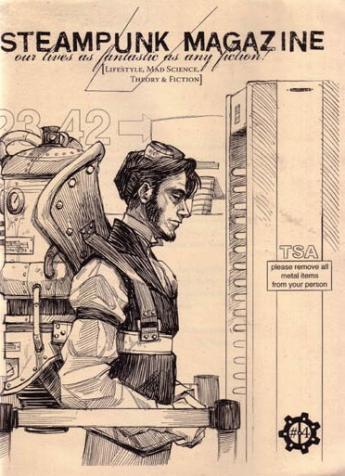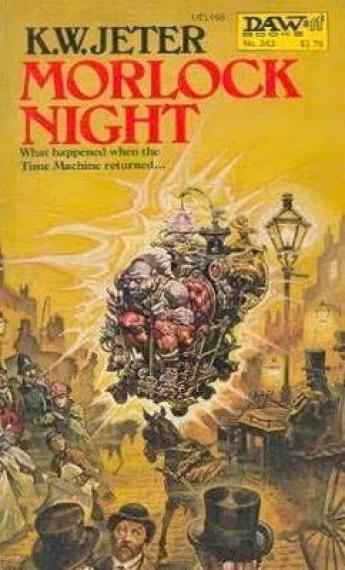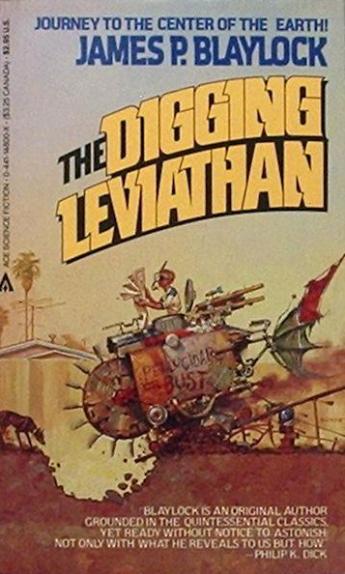Tip
Collecting Rare Books and First Editions - Steampunk'd at The Private Library

By L. D. Mitchell
Before the age of homogenization and micro-machinery, before the tyrannous efficiency of internal combustion and the domestication of electricity, lived beautiful, monstrous machines that lived and breathed and exploded unexpectedly at inconvenient moments. It was a time where art and craft were united, where unique wonders were invented and forgotten, and punks roamed the streets, living in squats and fighting against despotic governance through wit, will and wile.
Even if we had to make it all up ...
(Steampunk Magazine)
***
Take something that lots of folks today consider very cool and/or sexy - various types of advanced technology, for example - and move it to a setting that has the historical reputation of being excessively ... "rigid" - Victorian England, for example - and you have one of science fiction's (and fantasy's) most popular sub-genres, steampunk.
As Lavie Tidhar points out in a recent article,
"[t]he underlying theme of all fiction within the Steampunk sphere resorts to that moment whereby technology transcends understanding and becomes, for all intents and purposes, magical. It could be further argued that Victorian London represents the moment in history where that transformation happens. Not only is there an explosion of scientific and technical study, but for the first time the products of that Industrial Revolution become commodities, mass produced and thus escaping from the domain of the solitary inventor and into the public domain. This suggests why so many of the characters in Steampunk novels correspond to the "solitary scientist" archetype ..."
Actually, if the steampunk work at hand is more sci-fi than fantasy, it's more properly considered a sub-sub genre (of the alternate history sub-genre). However it's labeled, though, its founding fathers are K. W. Jeter (who coined the termsteampunk way back in 1987), Tim Powers and James Blaylock.
More recently, authors like William Gibson and Bruce Sterling, Paul Di Filippo and China Miéville have contributed their own unique visions of what steampunk can and should be about.
Trying to corral steampunk into some sort of rigid definition, though, is the very antithesis of what it is all about. As Tidhar points out, steampunk is an unstable categorization and likely to remain so:
"... what Steampunk narratives repeat again and again is the inevitability of the loss of control, as technology evolves beyond the confines of one person, assuming a mythical force that, echoing the school of Technological Darwinism, shapes and controls narrative causality ..."
On the one hand, technology in Steampunk has become magical; on the other, what magic there is has become highly scientific, so that reader expectations for genre stability are confounded ...
... the true strength of Steampunk is the way in which the two coexist: where technology becomes magical, magic becomes rigorously scientific. The resulting tension is at the core of Steampunk."
Steampunk long ago escaped from its literary confines and is now a lifestyle choice enthusiastically embraced by an astoundingly large number of people.
The world of fashion will never be the same …
Steampunk in the ILAB Metasearch
>>> click here to find a selection of titles
This collecting tip is published in The Private Library. It is presented here by permission of the author. Thank you very much.


